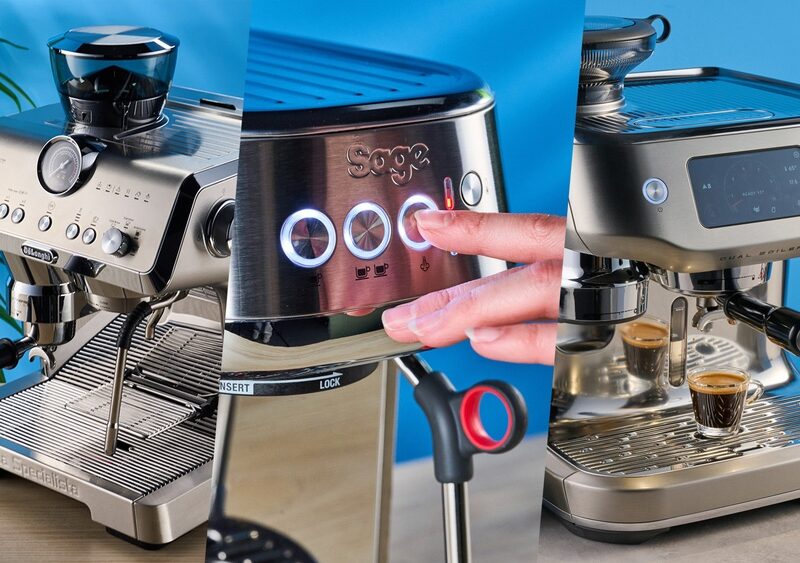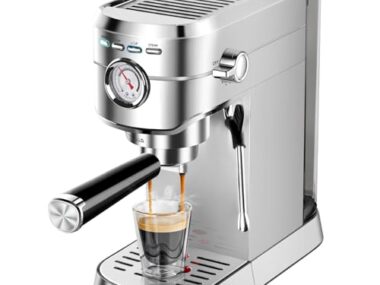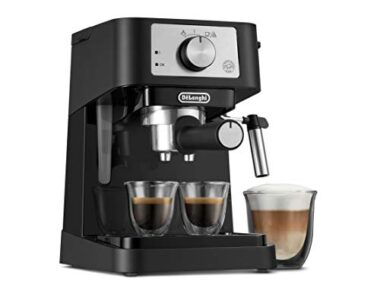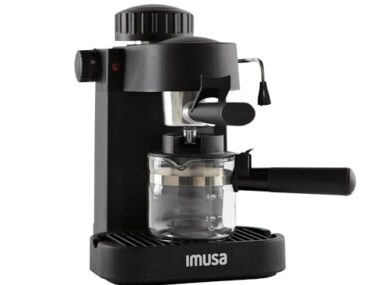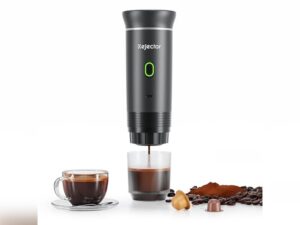If you love the rich, bold taste of espresso, you want every cup to be just right. Your DeLonghi espresso machine is a powerful tool that can help you make café-quality espresso at home.
But are you sure you’re using it to its full potential? Imagine pulling the perfect shot with a smooth crema and deep flavor every time. In this guide, you’ll discover simple steps and insider tips to unlock the best espresso your DeLonghi machine can deliver.
Ready to impress yourself and anyone you share your coffee with? Let’s dive in and make your espresso experience truly exceptional.

Credit: mashable.com
Choosing The Right Coffee Beans
Choosing the right coffee beans is a key step for making the best espresso with your Delonghi machine. The flavor and quality of your espresso depend greatly on the beans you select. Freshness, roast level, and grind size all play important roles. This guide will help you pick the perfect beans to enjoy rich, bold espresso shots every time.
Selecting Fresh Beans
Fresh beans create the best espresso taste. Buy coffee beans roasted recently, ideally within two weeks. Check the roast date on the package. Avoid beans that have been sitting on shelves for months. Store beans in an airtight container away from light and heat. Fresh beans preserve the natural oils and flavors needed for a full-bodied espresso.
Best Roast Levels For Espresso
Espresso usually tastes best with medium to dark roast beans. Medium roast offers balanced acidity and sweetness. Dark roast produces a stronger, bolder flavor with less acidity. Avoid very light roasts, as they may taste sour or weak in espresso form. Choose the roast level based on your taste preference. Experiment to find the best match for your Delonghi espresso machine.
Grinding Beans For Delonghi Machines
Grinding beans correctly is crucial for espresso extraction. Use a burr grinder to get consistent grind size. Set the grinder to a fine level, but not too powdery. Fine grounds help water flow through the coffee evenly and quickly. Adjust grind size slightly if espresso is too bitter or weak. Freshly ground beans give better crema and richer flavor in your Delonghi machine.
Preparing Your Delonghi Espresso Machine
Preparing your Delonghi espresso machine is key to brewing a rich and smooth espresso. Taking time to get your machine ready ensures the best flavor extraction. It also extends the life of your machine. Follow simple steps to maintain, preheat, and set the right water temperature.
Cleaning And Maintenance Tips
Clean the portafilter and filter basket before use. Wipe the steam wand after every use to avoid milk buildup. Regularly descale the machine using a recommended solution. Empty and rinse the water reservoir daily. Clean the drip tray and coffee grounds container often. These habits keep your machine running smoothly.
Preheating The Machine
Turn on your Delonghi espresso machine and let it warm up for about 15 minutes. Preheating stabilizes the temperature for even coffee extraction. Run a blank shot of water through the group head to warm it. This step prevents temperature drops during brewing. A well-preheated machine improves espresso quality.
Setting Water Temperature
Adjust the water temperature to match your coffee type. Delonghi machines often offer temperature control settings. Aim for 90-96°C (194-205°F) for optimal espresso taste. Too hot water burns the coffee, too cold under-extracts. Use the machine’s controls to select the correct temperature before brewing.
Mastering The Coffee Grind
Grinding coffee beans correctly is key to making great espresso with your Delonghi machine. The grind size controls how water flows through the coffee. This affects the taste and strength of your espresso. Learning to adjust the grind is essential for a balanced shot. Small changes in grind size can change the flavor a lot.
Here is how to handle the coffee grind for the best espresso experience.
Ideal Grind Size For Espresso
The perfect grind for espresso is very fine, almost like powdered sugar. This fine texture allows water to pass slowly through the coffee. It extracts rich flavors and oils. Too coarse a grind lets water flow too fast. This causes weak, watery espresso. Too fine a grind blocks water, leading to bitter taste. Aim for a grind size that feels smooth and powdery but not dusty.
Adjusting Grinder Settings
Start with a medium-fine setting on your grinder. Test a shot of espresso and watch the flow. If the coffee pours too fast, grind finer. If it drips very slowly or clogs, grind coarser. Make small adjustments and try again. Keep notes of settings and taste results. Your grinder may have numbers or clicks to guide changes. Consistency in grind size leads to better espresso every time.
Impact Of Grind On Flavor
The grind size affects espresso’s strength, bitterness, and aroma. Finer grinds extract more oils and caffeine. This creates a stronger, bolder taste. Coarser grinds produce lighter and more acidic coffee. Uneven grinds cause uneven extraction. This leads to sour or burnt flavors. Freshly ground coffee at the right size offers the best flavor balance. Adjust grind to match your taste preference and bean type.
Dosing And Tamping Techniques
Dosing and tamping are key steps in making great espresso with your DeLonghi machine. These techniques affect the flavor and strength of your coffee. Precise dosing ensures the right amount of coffee grounds. Proper tamping creates even resistance for water to flow through. Both steps help extract balanced espresso with rich crema.
Measuring Coffee Dose
Use a digital scale to weigh your coffee dose. Most espresso recipes call for 18 to 20 grams of coffee. Too little coffee makes weak espresso. Too much coffee can cause bitter taste and slow extraction. Always measure your dose before tamping for consistent results.
Proper Tamping Pressure
Apply firm and even pressure when tamping the coffee grounds. Aim for about 30 pounds of pressure. Hold the tamper level to avoid uneven packing. A flat, compact coffee puck allows water to flow evenly. Good tamping prevents channeling and over-extraction.
Avoiding Common Tamping Mistakes
Do not tamp too lightly; water will flow too fast. Avoid tamping with uneven pressure; this causes uneven extraction. Do not twist the tamper while pressing; this can crack the coffee puck. Always clean the portafilter edges after tamping to seal properly. Follow these tips for smooth espresso shots every time.
Pulling The Perfect Espresso Shot
Pulling the perfect espresso shot with your Delonghi machine is essential for a rich and balanced cup. It requires attention to detail and understanding key factors. Small adjustments can greatly improve flavor and texture. This section breaks down the essentials for a great espresso shot every time.
Correct Extraction Time
The ideal extraction time is usually between 25 and 30 seconds. This allows the water to pass through the coffee grounds evenly. Too short, and the espresso will taste weak and sour. Too long, and it becomes bitter and over-extracted. Use your Delonghi’s timer or stopwatch to keep track. Consistency in timing leads to better results.
Adjusting Shot Volume
Shot volume controls the strength and taste of your espresso. A standard shot is about 30 ml, while a ristretto is shorter and stronger. Your Delonghi machine lets you adjust this easily. Start with the recommended volume, then tweak according to taste. Smaller volumes concentrate flavor, larger ones are milder. Experiment within these limits for your perfect cup.
Recognizing A Good Crema
Good crema is a thin, golden layer on top of your espresso. It shows freshness and proper extraction. Look for a creamy texture without large bubbles. The color should be a rich caramel or golden brown. Crema adds aroma and smoothness to every sip. If your crema is thin or missing, check grind size and tamp pressure. Perfect crema means a quality espresso shot.
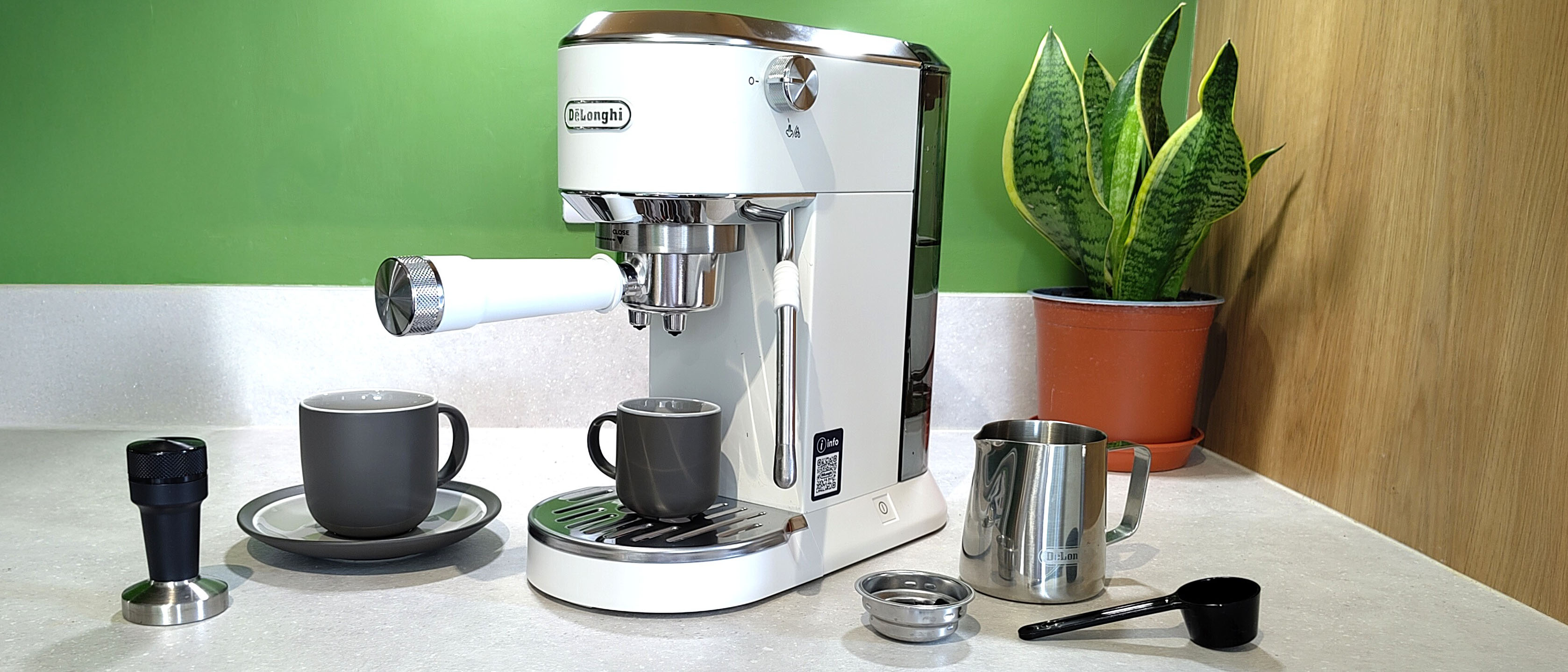
Credit: www.techradar.com
Enhancing Espresso Strength And Flavor
Enhancing the strength and flavor of your espresso brings out its true character. Small changes to your Delonghi espresso machine settings can make a big difference. Focus on three key areas to improve your espresso: coffee dose, brew temperature, and coffee blends. Each factor affects taste and intensity in unique ways. Experiment with these tips to find your perfect cup.
Increasing Coffee Dose
Using more coffee grounds increases espresso strength. Your Delonghi machine allows you to adjust the dose easily. Start by adding a little more coffee to the portafilter. This creates a richer and bolder flavor. Avoid overfilling to prevent bitter notes. A balanced dose helps extract the best oils and aromas.
Modifying Brew Temperature
Changing the brew temperature affects espresso taste. Higher temperatures bring out stronger, deeper flavors. Lower temperatures highlight subtle, fruity notes. Most Delonghi machines let you set the temperature. Try small adjustments to find the best heat level. Consistent temperature control ensures smooth and even extraction.
Using Different Coffee Blends
Different coffee blends create unique espresso flavors. Single-origin beans offer distinct tastes from specific regions. Blends mix beans for balanced and complex profiles. Choose blends that match your flavor preference. Darker roasts deliver a stronger, smokier taste. Lighter roasts give a brighter, more acidic flavor. Experiment with blends to discover your ideal espresso.
Steaming Milk For Espresso Drinks
Steaming milk is key to making rich espresso drinks with your DeLonghi espresso machine. The right milk texture and temperature add flavor and creaminess. Proper steaming also helps create beautiful latte art. Follow these simple tips to steam milk like a barista at home.
Creating Microfoam
Microfoam is smooth, creamy milk with tiny bubbles. Start with cold milk for best results. Insert the steam wand just below the surface of the milk. Turn on the steam and lower the pitcher slowly. This adds air evenly, creating fine foam. Avoid large bubbles; they ruin texture. Stop steaming when the milk looks shiny and thick.
Milk Temperature Tips
Heat milk to around 140°F (60°C). Use a thermometer or feel the pitcher’s side. Milk that is too hot loses sweetness and can burn. Milk too cold makes flat drinks. Turn off the steam wand before removing it from the milk. Wipe and purge the wand to keep it clean.
Latte Art Basics
Pour steamed milk slowly into the espresso. Hold the cup at an angle. Start with a high pour to mix milk and coffee. Move the pitcher closer and pour faster to form patterns. Practice simple shapes like hearts or rosettas. Latte art looks great and shows your skill with the DeLonghi machine.
Troubleshooting Common Issues
Troubleshooting common issues with your DeLonghi espresso machine helps you enjoy better coffee. Small problems can affect taste and machine performance. Knowing quick fixes saves time and frustration. Here are solutions for frequent espresso problems and machine alerts.
Fixing Bitter Or Sour Espresso
Bitter espresso often means over-extraction. Reduce brewing time or grind size for a finer texture. Use fresh, quality coffee beans for better flavor. Sour espresso usually shows under-extraction. Try a finer grind or increase brewing temperature slightly. Clean your machine regularly to avoid old coffee residue affecting taste.
Dealing With Weak Shots
Weak espresso shots lack strength and richness. Check the coffee dose; use enough grounds in the portafilter. Tamp the coffee firmly but evenly for proper extraction. Adjust the grind size to be finer to increase strength. Make sure water temperature is hot enough, usually between 190°F and 205°F.
Machine Error Indicators
DeLonghi machines show error lights or codes for problems. A blinking light might mean the water tank is empty or not seated properly. Descale your machine if a warning appears to remove mineral buildup. If the machine overheats, give it time to cool before restarting. Consult the user manual for specific error codes and fixes.
Maintaining Your Espresso Machine
Maintaining your DeLonghi espresso machine keeps it working well. Clean and care for it regularly. A well-maintained machine makes better espresso and lasts longer.
Regular Cleaning Schedule
Clean your espresso machine after every use. Empty the drip tray and coffee grounds container. Wipe the steam wand after frothing milk to avoid buildup. Use a damp cloth to clean the exterior. Deep clean the brew group weekly if your model allows. This removes coffee oils and residues that affect flavor.
Descaling Procedures
Descale your machine every 2 to 3 months. Hard water causes mineral buildup inside the machine. Use a descaling solution recommended by DeLonghi. Follow the machine’s instructions carefully for safe descaling. Rinse thoroughly to remove all chemicals. Descaling keeps water flowing well and prevents damage.
Replacing Parts When Needed
Check seals, gaskets, and filters regularly. Replace worn parts promptly to avoid leaks or poor performance. Use only genuine DeLonghi replacement parts. Some parts like water filters and brew groups need changing after set periods. Keeping parts fresh ensures consistent espresso quality and machine reliability.

Credit: www.youtube.com
Frequently Asked Questions
How To Make Strong Espresso With Delonghi?
Preheat your DeLonghi machine and warm the cup. Use finely ground coffee and the highest intensity setting. Pack more coffee into the filter. Brew with hot water and extract fully for a strong espresso shot.
What Is The 2 1 Rule For Espresso?
The 2:1 rule for espresso means extracting twice the amount of liquid as the coffee grounds used. For 20 grams of coffee, brew 40 grams of espresso. This balance ensures ideal flavor and strength in your shot.
What Is The Best Grind Size For Espresso Delonghi?
The best grind size for DeLonghi espresso machines is fine, similar to granulated sugar. It ensures optimal extraction and rich flavor. Adjust grind size slightly to match your machine model and coffee beans for perfect espresso shots every time.
How To Properly Use A Delonghi Espresso Machine?
Place the machine on a flat surface and fill the water tank. Preheat the machine and warm your cup. Grind coffee finely, fill the portafilter, and tamp firmly. Insert the portafilter, place the cup under the spout, and start brewing.
Clean the machine after use.
Conclusion
Making the best espresso with your Delonghi machine is simple. Use fresh coffee and the right grind size. Keep your machine clean and warm before use. Measure coffee carefully for consistent strength. Experiment with water temperature and extraction time. Enjoy each cup slowly to appreciate the rich flavor.
Practice helps you find your perfect espresso balance. Your Delonghi espresso machine can bring café taste home. Start brewing, and savor every sip!
